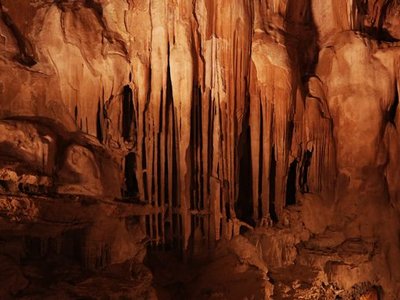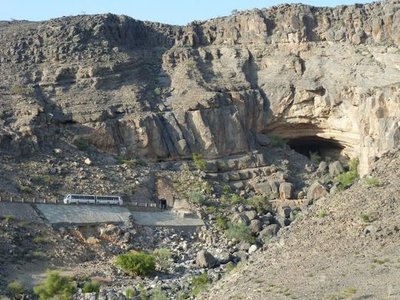Al Hoota Cave


Al Hoota Cave is about
three miles (five kilometers) long, making it the biggest cave in the Arabian Peninsula. A regular visit goes only 500 meters into the cave, up to the first lake. Further into the cave are three more lakes and several waterfalls, which can also be visited, but special arrangements must be made.
It’s estimated that Al Hoota Cave was formed about two million years ago by carbon-rich water running through tectonic fractures and dissolving limestone. The result was the formation of large passages, and majestic stalactites and stalagmites.
Al Hoota Cave is also home to several animals such as bats, mollusks, snails, and spiders, but the most interesting of these is the Garra Barreimiae, a small fish that lives in the lakes deep inside the cave. Because of its ecosystem, this fish lost its sight and pigmentation. The non-blind relative of this fish can be found in pools and wadis in the region, but the blind variety can only be found inside Al Hoota Cave. It is also known as the Omani blind cavefish.
There are two competing versions of how Al Hoota Cave was first discovered. One version maintains that the cave was discovered in 1960 by a shepherd following his herd of sheep and accidentally stumbled upon the cave. According to the second version, the cave has been used by local people as a secret emergency shelter for centuries. The cave remained a hidden gem until 2006 when it was first opened to the public.